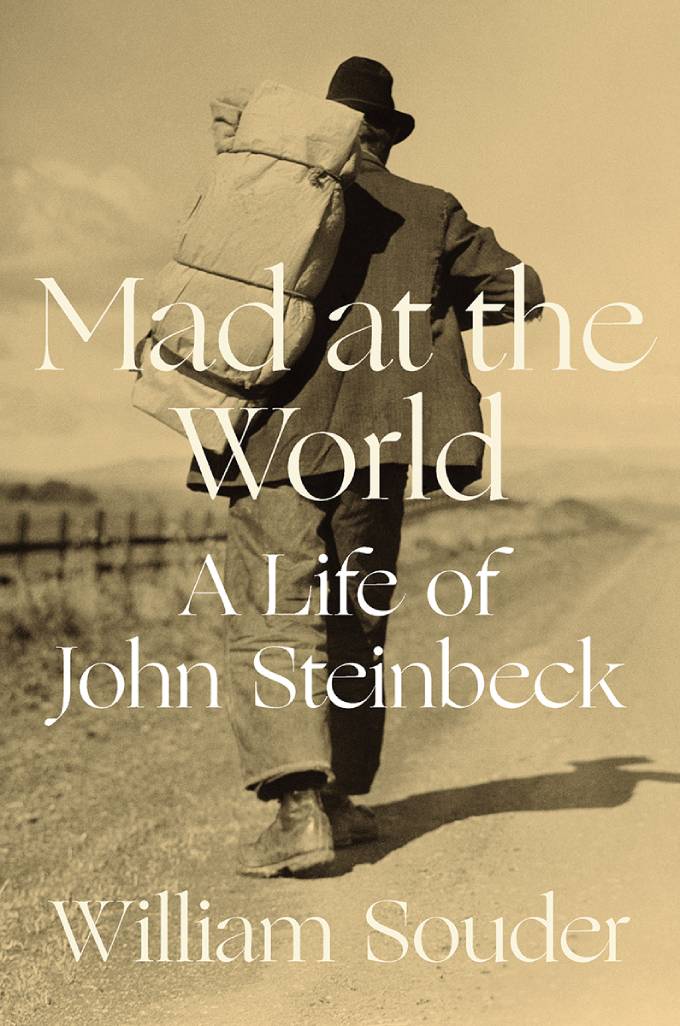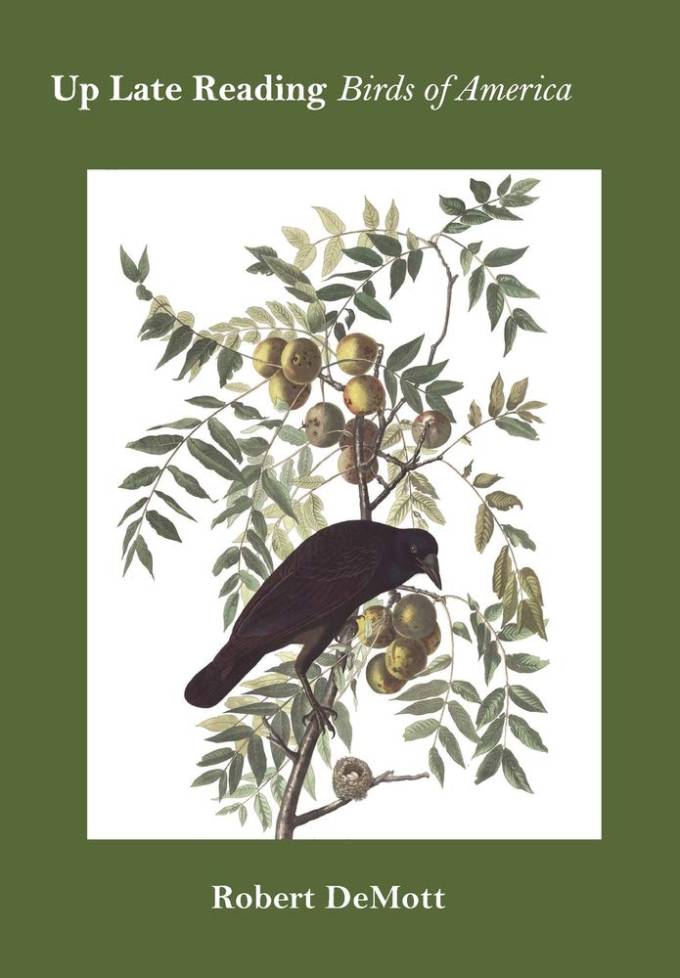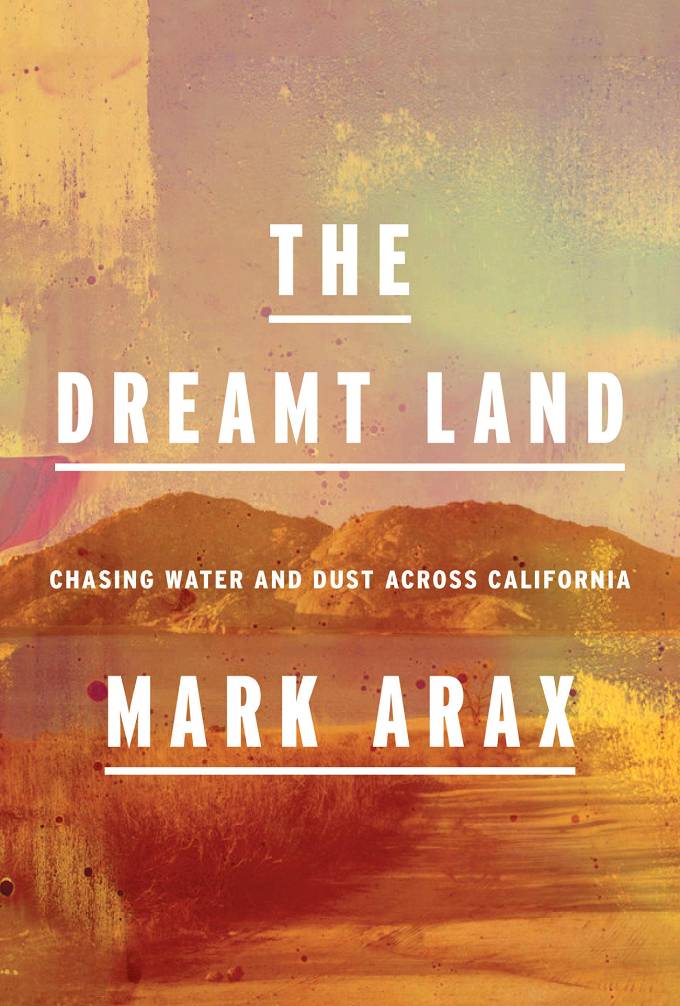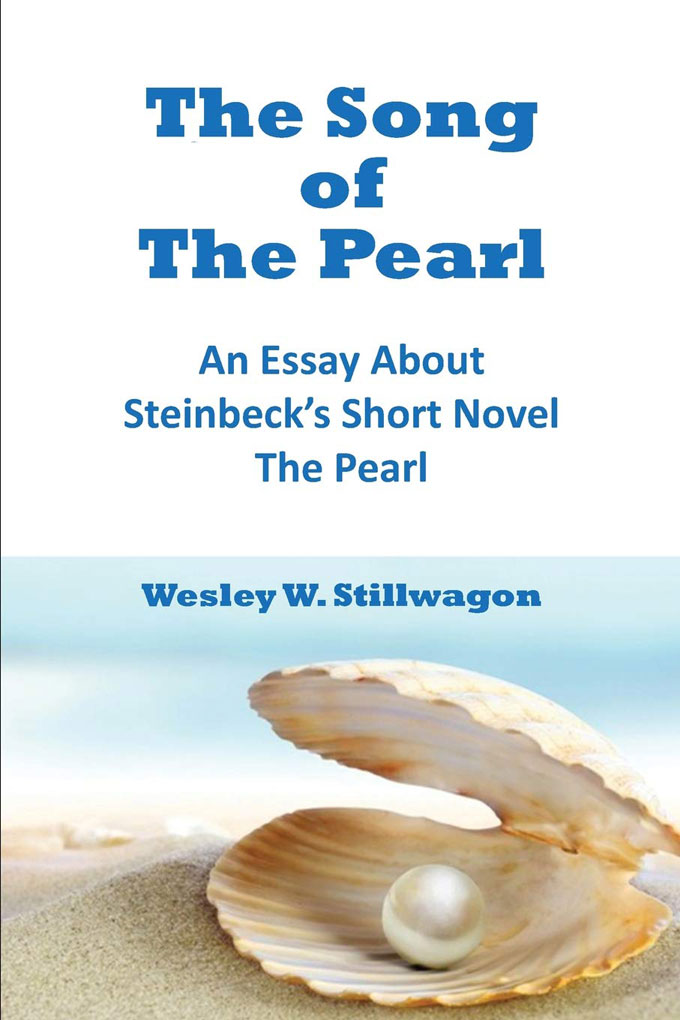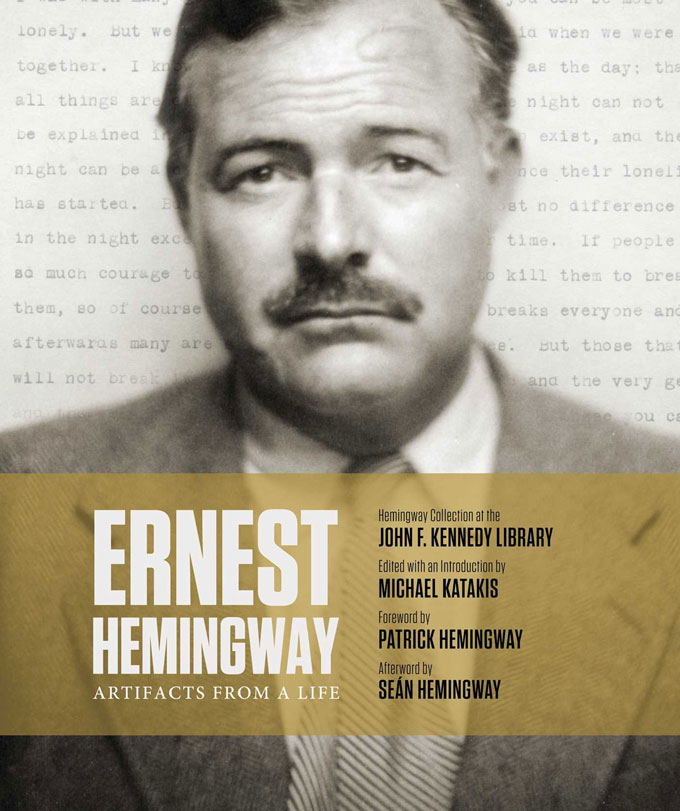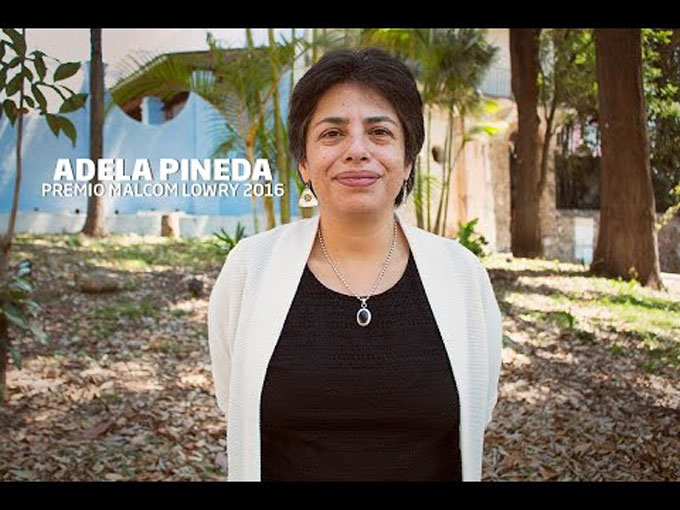Chasing Steinbeck’s Ghost—a new Kindle book by the author of Dogging Steinbeck—details the actual and speculative timelines of Travels with Charley, John Steinbeck’s 1962 account of his 1960 road trip with his wife Elaine’s poodle. According to Bill Steigerwald—an investigative reporter with a journalist’s skepticism about the claims of creative nonfiction—Steinbeck fabricated characters, conversations, and events to make points while covering his tracks when facts conflicted with the purpose or the persona of his 10,000-mile odyssey “In Search of America.” After Steigerwald set out to retrace Steinbeck’s journey in 2010, he discovered that Steinbeck’s dates and places frequently failed to compute, particularly at points where Elaine flew in to rough it with her husband and had to be edited out of the story. Like Steigerwald’s Truth about Charley website, the Kindle book is written in lively, contrarian language that makes for informative and entertaining reading. Scholars and specialists who defended Steinbeck’s creative nonfiction when Dogging Steinbeck appeared are unlikely to be swayed by the sequel. Fans outside the academy will find it engaging and eye-opening—further evidence of John Steinbeck’s continued popularity with regular readers, and of the relevance of Travels with Charley to issues of fake news and America’s unresolved search for itself.
New Kindle Book Traces Steinbeck’s Steps, and Fibs, In Travels with Charley
Mad at the World Will Make Headlines and Happiness
An advance copy of Mad at the World: A Life of John Steinbeck in the hands of Steinbeck Now shows why the new biography of America’s greatest writer by William Souder is certain to make media headlines—and readers happy—when it is released by W.W. Norton & Company in October. Five years in the making, it is the first full-length life of Steinbeck in a generation and differs from earlier biographies by focusing on inner psychology as well as external events, illuminating the personal conflicts, crises, and contexts that made Steinbeck’s career so hard for critics to accept when he was alive. Written in clear English with impeccable but unobtrusive scholarship, it resolves old mysteries, dispels accrued nonsense, and reveals hidden motivations in the history of a writer whose life, told here, reads like a novel. A full review will appear in this space in September, but don’t wait until then. Pre-order your copy today.
The Face of John Steinbeck’s Mayor in The Moon Is Down?
An essay in the Spring 2020 issue of Steinbeck Review suggests a previously unacknowledged source for the setting, situation, and cast of John Steinbeck’s 1942 novella-play The Moon Is Down. Theodor Broch, the exiled mayor of Narvik, Norway—a shipping hub for Swedish iron ore on its way to wartime Germany—escaped the Nazi invaders of his strategically important town shortly after they defeated Norwegian, British, and French defenses in June of 1940. Broch fled to the United States, where he became a media celebrity, lecturing on behalf of the Norwegian resistance and publishing a book-length account of the occupation, The Mountains Wait, within months of The Moon Is Down. For the full story, subscribe to Steinbeck Review, the official journal of Steinbeck scholarship published biannually by San Jose State University and Penn State University Press.
“Proems” by Robert DeMott Inspired by Birds of America
Up Late Reading Birds of America, a book of “proems” by Robert DeMott, is the latest link connecting John Steinbeck scholars with the life and times of John James Aubudon, the pioneering naturalist and painter whose Birds of America (1827) remains a classic of American ornithology and art history. The author of seminal studies including Working Days: The Journals of The Grapes of Wrath (1990) and Steinbeck’s Typewriter: Essays on His Art (1996), DeMott is the Edwin and Ruth Kennedy Distinguished Professor Emeritus of American Literature at Ohio University, where he taught from 1969 to 2003. Under a Wild Sky: John James Audubon and the Making of The Birds of America (2004), a finalist for the Pulitzer Prize, was the first biography of a major figure written by William Souder, the journalist whose Mad at the World: A Life of John Steinbeck is scheduled for publication by W.W. Norton in October.
Listen as Bob DeMott reads “proetry” from Birds of America:
Why The Grapes of Wrath Disappeared from Jeanine Cummins’s American Dirt
The Grapes of Wrath played a part in the monstrous promotional campaign that helped American Dirt become one of this year’s biggest best-sellers.
But John Steinbeck’s classic is no longer part of the controversy that has befallen Jeanine Cummins’s novel about a Mexican mother and her son who illegally cross the border into the United States. American Dirt was exuberantly plugged in January by Oprah Winfrey for her book club and praised by a score of book reviewers as heart-poundingly suspenseful, unforgettable, important and timely, realistic, moving, a future classic, etc. etc. etc. Stephen King and John Grisham raved about it in their blurbs, and a line on the original book cover touted it as a modern-day version of The Grapes of Wrath.
Then, after American Dirt sold upwards of 200,000 copies, it was slammed by a wave of criticism for its political incorrectness and its stereotypical portrayal of Latinos. Oprah took serious heat for plugging the novel. The publisher, Macmillan-owned Flatiron Books, apologized for the excessive promotional campaign and removed the Grapes of Wrath reference from the cover. Citing “specific threats to booksellers and the author,” Flatiron chose to cancel Cummins’s book tour. Laura Miller’s piece on the controversy at Slate sums up the problem pretty well, posing the question “Will the American Dirt Fiasco Change American Publishing?”
Note to Author: “Pendeja, You Ain’t Steinbeck”
A reductive version of the complaints about American Dirt claims that the novel’s detractors believe a white woman shouldn’t write about the experiences of Latino migrants. In truth, nearly all of the considered criticism of the novel points out either inaccuracies or stereotypes which, according to “Pendeja, You Ain’t Steinbeck”—Myriam Gurba’s widely shared review at Tropics of Meta—betray Cummins’s lack of knowledge about her subject matter and her attempt to render a complex situation and culture into “trauma porn” palatable to an American readership envisioned as primarily white. Slate says that American Dirt‘s publisher went wrong by enthusiastically hawking a commercial novel as if it made “a contribution to a vital understanding” of the immigration issue when in fact the migrant experience was merely used “as a backdrop for an entertaining suspense story.”
In other words, when it comes to promoting a serious political message or pushing for sociopolitical change, The Grapes of Wrath it ain’t.
The controversy over American Dirt isn’t over yet. Starting tonight at midnight, Apple TV+ will live-stream a discussion taped last month that features Oprah, Cummins, and three prominent critics of the novel. The show, as The Hollywood Reporter puts it, will be a “debate about the marginalization of Latino voices, the lack of diversity in publishing, and the question of who is best suited to tell a given story.”
Image courtesy Slate magazine.
The Ghost of John Steinbeck Inhabits The Dreamt Land
The spirit of John Steinbeck haunts the world of Mark Arax, the award-winning author and journalist from Fresno, California whose latest work—The Dreamt Land: Chasing Water and Dust Across California—continues the investigation of land abuse and human tragedy in California’s Central Valley that began with The King of California: J.G. Boswell and the Making of a Secret American Empire (2003) and remains, like Steinbeck’s style of dudgeon in The Grapes of Wrath, both detached and intensely personal. A restless son of Fresno’s substantial Armenian community, Arax first reported on Central Valley life for the Los Angeles Times while pursuing the people behind his father’s 1972 murder in the 1996 memoir, In My Father’s Name, that made Fresno feel more like Blue Velvet, the 1986 movie by David Lynch, than The Human Comedy, the 1943 novel by Steinbeck’s contemporary and the Arax family’s neighbor William Saroyan. Like The King of California (co-authored with Times colleague Rick Wartzman), Arax’s third book—West of the West: Dreamers, Builders, and Killers in the Golden State (2009)—followed the founding crimes of overbuilding, exploitation, and genocide from their roots in Gold Rush greed to the case of “The Last Okie in Lamont,” the Central Valley town that stimulated Steinbeck’s spleen in The Grapes of Wrath. A splendid sequel to West of the West, The Dreamt Land is Arax’s longest book to date, and—for fans of Steinbeck’s ghost—his finest.
The Music of John Steinbeck
I was recently asked to consider writing an essay about Steinbeck’s short novel The Pearl to be included in a text series for secondary and undergraduate English education. Frankly The Pearl wasn’t one of my favorite Steinbeck books, and I couldn’t imagine I would be able to come up with 20 pages on the short novel. But the more I reread it, the more the subject of the Song of the Pearl kept nudging my interest. I became curious about Steinbeck’s specifying a “song” as opposed to a musical note, chord, or phrase. I knew he was interested in classical music, and I believed his choice of the word “song” was important to the story. But the publisher’s formatting specifications were overwhelming and I couldn’t decide how to reduce the content to fit within the length requirements, so I decided to publish it elsewhere. I believe doing so is important to my personal mission to support the practical and scientific psychology of Carl Jung and William James as it was deftly applied by John Steinbeck in his fiction and non-fiction. The Song of the Pearl is about personal styles, levels of maturity, attitudes, and how such things influence individual perception, judgment, decision-making, problem-solving, and social bodies like the small indigenous coastal village of the central character in the novel.
Hemingway Book Prompts Steinbeck Question: Opinion
If a photo had been taken of Ernest Hemingway and John Steinbeck when they met for the first and only time, at Tim Costello’s restaurant in New York in 1944, Michael Katakis would know, and he would have shared it with us in the visual biography that puts a fresh face on an old legend: Ernest Hemingway: Artifacts from a Life, a life story in pictures, with connecting word tissue, drawn from the Hemingway collection at the Kennedy Library, edited with an introduction by Michael, who has served as the executor of Hemingway’s literary estate since 1999. A writer and documentary photographer, he manages to divide his time productively between Paris, Hemingway’s city, and Steinbeck’s Carmel, California, a distance that symbolizes the divide experienced by the two writers in the 1920s, and the difference in attitude each took toward other writers in the decades that followed. Steinbeck, more sympathetic and less assertive, admired Hemingway and showed respect. That Hemingway behaved otherwise is apparent in the account of the 1944 meeting written in 1989 by Jackson Benson, author of the 1984 best-seller, The True Adventures of John Steinbeck, Writer. The achievement of Ernest Hemingway: Artifacts from a Life in using archival material to reframe and restore Hemingway’s reputation in 2018 raises another issue regarding Steinbeck. Libraries at various locations hold an abundance of artifacts—family photographs, private correspondence, personal memorabilia—from Steinbeck’s life. Fifty years after his death, are his executors, editors, and heirs too distant, or too divided, to do the same thing for him?
Practicing Democracy with The Grapes of Wrath
Actions that endanger democracy make most Americans mad, so it’s appropriate that the people behind the Practicing Democracy Project chose John Steinbeck’s angriest novel, The Grapes of Wrath, to launch the We the People Book Club, an online discussion group open to anyone with a computer, a passion for democracy, and $24. Per the project announcement, “participants will receive a weekly email with insights on the week’s reading, questions to discuss in an online forum, recommended resources,” and a downloadable guide to the month’s book selection. The project, which has a spiritual as well as a political side, starts this week with The Grapes of Wrath and ends in August 2019 with Zora Neale Hurston’s Their Eyes Were Watching God. If either side appeals to you, get out your credit card and sign up today.
How John Steinbeck Read US-Mexico Relations: Book
Mexico was a magnet for John Steinbeck, a frequent visitor and sympathetic observer who explored the threats posed by assumptions he questioned to a culture he admired in fiction (The Pearl), film (The Forgotten Village), and history (the writer’s superbly researched introduction to Viva Zapata!). Fresh evidence that the feeling was mutual can be found in Steinbeck y Mexico: Una Mirada Cinematografica en la Era de la Hegemonia Norteamericana by Adela Pineda, Associate Professor of Spanish at Boston University and Director of Latin American Studies Program at Boston University’s Frederick S. Pardee School of Global Studies. “Steinbeck’s engagement with the history and the cinematic archive of revolutionary Mexico took place in an embattled field of political and cultural activity on both sides of the Río Grande, hence it could not be but complex and contradictory,” explains Pineda, winner of the Malcolm Lowry Fine Arts Literary Essay Award from the Instituto Nacional de Bellas Artes for Las Travesías de John Steinbeck Por México, El Cine y Las Vicisitudes Del Progreso. Pineda’s archival research revealed “the many facets of Steinbeck as a novelist, scriptwriter, film collaborator, and public intellectual”; writing a book about “Steinbeck going global from the vantage point of Mexico” is a fitting tribute to an admiring author whose research into a vanishing way of life became material for enduring art.

